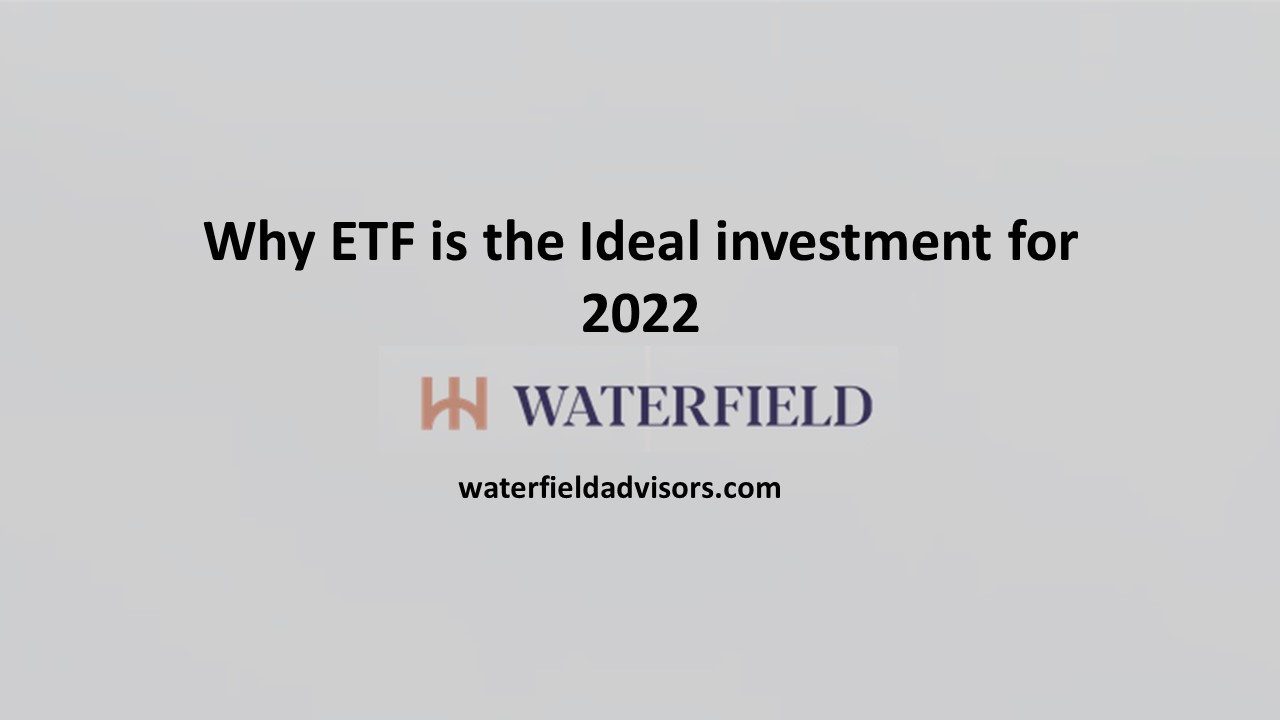Why ETF is the Ideal investment for 2022? - PowerPoint PPT Presentation
Title:
Why ETF is the Ideal investment for 2022?
Description:
Due to the total expense ratio, low-risk arbitrage potentially results in risk-free returns. secondly, monitoring error is the gap between the index return and the ETF return. – PowerPoint PPT presentation
Number of Views:1
Title: Why ETF is the Ideal investment for 2022?
1
Why ETF is the Ideal investment for 2022
waterfieldadvisors.com
2
What is an ETF?
An ETF, like an index fund, is a marketable
product that captures an index, a commodity, a
bond, or a portfolio of assets. ETF prices
fluctuate throughout the day as they are
purchased and sold during the exchange's trading
hours. ETFs are funds that track indexes such as
the CNX Nifty or the BSE Sensex, among others.
When you purchase ETF shares or units, you are
purchasing shares or units of holdings that
tracks the yield and return of its native index.
The key difference between ETFs and other forms
of index funds is that ETFs do not try to beat
their respective index, but instead merely follow
their performance.
waterfieldadvisors.com
3
Are ETFs cost-efficient Investment options?
According to top wealth management firms, ETFs
monitor an index rather than attempting to
surpass it, and they have fewer administrative
expenses than actively oriented portfolios.
Typical ETF administration expenses are lower
than those of an actively-managed fund, coming in
at less than 0.20 per year, compared to more
than 1 percent for certain actively managed
mutual fund schemes. Because they have a lower
expense ratio, they have fewer recurrent charges
that reduce ETF returns.
waterfieldadvisors.com
4
What is the difference between ETF and mutual
funds?
An ETF, unlike traditional mutual funds, trades
on a stock market like a common stock. An ETF's
trading price fluctuates throughout the day, just
like any other stock, because it is acquired and
traded on the stock exchanges. An ETF's trading
value is determined by the net asset underlying
index equities that it represents. Wealth
management firms suggest individual investors
invest in ETFs since they offer comparatively
more liquidity and cheaper costs than mutual fund
schemes. Also, they typically cover a limited
number of equities, as opposed to mutual funds,
whose investment portfolio is constantly
changing. Considering these grounds, ETFs reduce
the "management volatility" and invest in stocks
that are leveraging the potential of the industry
itself, as opposed to investing in a mutual fund
administered by a fund manager.
waterfieldadvisors.com
5
Is ETF highly volatile?
To initiate, the ETF price refers to the rate at
which the ETF trades on the market. The
underlying assets' worth is indicated by the
ETF's net asset value (NAV) at the conclusion of
each trading day. Consider the possibility that
the ETF you want to purchase or sell is not
widely traded. In such circumstances, there will
always be a significant difference between the
bid price and the asking price. This is known as
the bid-ask spread. The greater the bid-ask
spread, the less liquid the ETF. Before investing
in ETFs, investors should research typical
trading volumes and see if there is a wide
bid-ask gap.
waterfieldadvisors.com
6
How to invest in ETFs?
ETF units follow the same settlement cycle as
any other investment traded on the market. Each
unit of equity index funds represents one-tenth
of the index's value. Because the investor must
first send in the cash to the broker, ETF
transactions take place on the stock market where
they are listed. To invest, investors must have a
brokerage account with a broker as well as a
Demat account. As a result of the low liquidity
of ETFs, ETF investors must endure trading fees
and any volatile price movements.
waterfieldadvisors.com
7
Why invest in ETF?
Due to the total expense ratio, low-risk
arbitrage potentially results in risk-free
returns. secondly, monitoring error is the gap
between the index return and the ETF return. This
is a crucial performance metric termed by wealth
management firms because you are investing in the
index as an investor. Finally, liquidity is
critical for ETFs since, unlike mutual funds,
ETFs are purchased and sold on stock markets. If
an ETF is not highly liquid, you may not be able
to locate enough buyers to sell your ETFs.
waterfieldadvisors.com
8
Thank You
waterfieldadvisors.com































